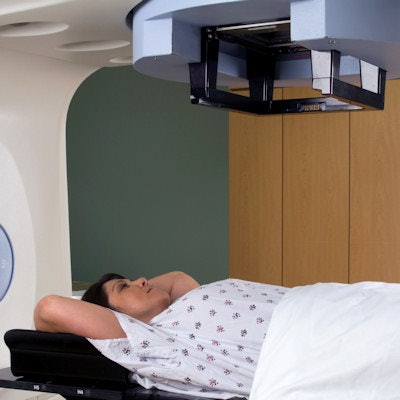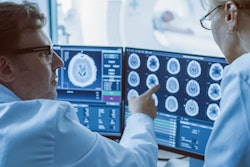
Women who undergo radiation therapy to the left side of the chest to treat breast cancer are at twice the risk for coronary artery disease, according to research published September 21 in the Journal of the American College of Cardiology.
A team led by Dr. Lauren Carlson from the Memorial Sloan Kettering Cancer Center in New York City said women between the ages of 25 and 54 who have radiation therapy to the left breast should be monitored after breast cancer diagnosis and treatment for coronary artery disease, with up to 27.5 years of follow-up.
"Only 9% of coronary artery disease diagnoses were reported within the first five years of follow up, supporting the need for long-term follow up of younger breast cancer survivors to identify late cardiovascular disease as a result of radiation therapy," Carlson and colleagues said.
Between 2015 and 2018, the risk of coronary heart disease among U.S. women ages 20 to 39 was 0.9% and 6.6% among women ages 40 to 59.
Radiation therapy is a widely used treatment for breast cancer, but long-term complications related may occur. Previous research has shown left-sided radiation therapy increases risk of developing heart disease in older populations. However, this hasn't been evaluated in younger women, the researchers said.
The study authors wanted to report coronary artery disease risk among participants in the Women's Environmental Cancer and Radiation Epidemiology Study. This was a population-based study of women diagnosed with stage I or II invasive breast cancer before 55 years of age between 1985 and 2008.
Data from 972 women younger than 55 years old who received radiation therapy to treat their breast cancer was included in the study. The women completed health questionnaires.
Their median follow-up time was 14 years. The 27.5-year cumulative incidence of coronary heart disease was 10.5% for women receiving left-sided radiation therapy, versus 5.8% for right-sided radiation therapy (p = 0.010). There also was a 2.5 hazard ratio of coronary artery disease for left- versus right-sided radiation therapy.
The team looked at cardiovascular risk factors such as increased body mass index, smoking, high blood pressure or high cholesterol paired with radiation therapy, but little evidence of their effects was found. However, study authors said smoking history and body mass index are important predictors of coronary artery disease risk that can be assessed during survival follow-up of women treated for breast cancer.
The researchers also noted, however, that since the study period, radiation therapy techniques have been refined to further reduce incidental radiation exposure to the heart.
They called for future studies using cardiac dosimetry and newer cardiac dose-sparing techniques to help understand the effects of differing radiation therapy treatment plans on the heart among younger women treated for breast cancer.
"Finally, studies of the risk of cardiovascular disease among women receiving both radiation therapy and chemotherapy as adjuvant treatment for breast cancer should be further investigated to determine the possible synergistic adverse effects of radiation therapy and chemotherapy treatments on the heart," they added.
In an editorial led by Dr. James Bates from Emory University in Atlanta, Bates et al wrote that this study "expands our understanding" of radiation therapy-related coronary artery disease in breast cancer survivors and "reaffirms the magnitude of risk" in younger survivors regardless of therapy.
"Patient education and follow-up with primary care hopefully will help establish lifelong cardiac prevention for breast cancer survivors," they wrote. "Involvement of a cardio-oncologist may increase the likelihood of consistent management of cardiac risk factors and serve as a resource for young women who have survived breast cancer in minimizing the long-term risk of cardiovascular disease from radiation therapy."




















